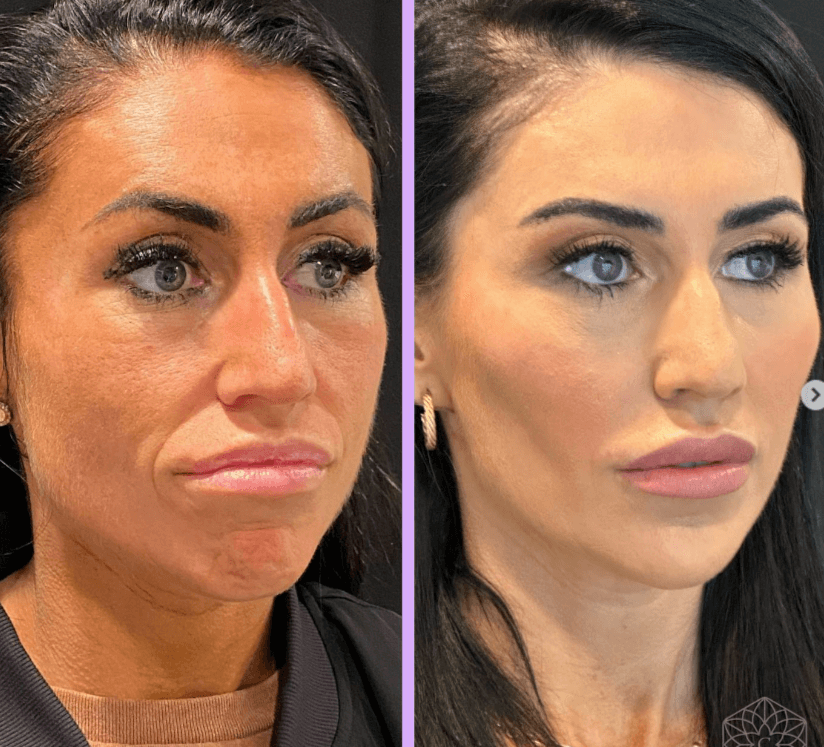Facial balance aims to have your facial characteristics be in visual and perceptual harmony with one another. Learning how to use numerous approaches to improve one’s face look requires an awareness of facial dimensions and the links between their various components.
Whether by surgical or non-invasive procedures, cosmetic cosmetics, or dental work, the goal of facial balancing is the same: to produce a face appearance that is balanced and attractive to the eye.
This article will dig into the nuances of face balance, discussing its relevance, procedures, and its effect on one’s self-confidence and sense of aesthetic beauty.
Understanding Facial Balance

The concept of facial harmony is the cornerstone of balance. It’s about making sure your eyes, nose, lips, cheeks, and jawline are all proportionate and in line with one another. When all of these features are in harmony, the result is a beautiful, symmetrical face.
Facial harmony, however, does not mean flawlessness or adherence to any one ideal. Facial balancing works to improve one’s appearance by adjusting one’s characteristics such that they complement one another while still being recognizably one’s own person.
What Kind of Person Benefits Most From Facial Balancing?
Facial balance may help many people with facial symmetry and harmony issues. There is no “ideal” candidate for face balancing, although some traits and situations may make someone more likely to benefit. Facial balance may help these people:
- Individuals with Facial Asymmetry: Asymmetry occurs when one side of the face differs from the other. Genetics, injuries, and development may cause it. These inequalities may be corrected through facial balancing.
- Those with Specific Facial Concerns: Some individuals worry about imbalanced or out-of-proportion face characteristics. Chin augmentation may enhance face symmetry in people with weak chins. Rhinoplasty may improve nose shape and proportion for others. Facial balancing may fix these issues and improve your look.
- Individuals with Age-Related Changes: Facial volume, skin laxity, and bone structure vary with age, creating an unbalanced look. Dermal fillers may restore volume and enhance facial features for a more youthful appearance.
- Those Seeking Improved Self-Confidence: Facial balancing is often done to boost self-esteem. Balanced face characteristics improve self-esteem and well-being. Everyone benefits from this.
- People Considering Career Advancement: Some careers depend on looks. Modeling, acting, public speaking, and customer service may value face beauty. These professionals may benefit from facial balancing to improve their image.
The Golden Ratio and Facial Proportions
Facial harmony is heavily influenced by the ancient mathematical principle of the Golden Ratio. It’s a term for an aesthetically pleasant and harmonious ratio of around 1.618. Facial traits that are closer to the Golden Ratio are seen as more appealing by many professionals and artists.
According to these idealized proportions, the width of the mouth should be around 1.618 times the width of the nose, and the breadth of the eye should be about 1.618 times the width of the mouth.
Techniques for Achieving Facial Balance

- Surgical Procedures: Surgical procedures including orthognathic surgery, rhinoplasty, and chin augmentation may correct structural irregularities and improve facial symmetry. These operations may entail making minor adjustments to the underlying bone structure or soft tissues to achieve a more harmonious look.
- Non-Invasive Treatments: Less invasive alternatives to surgical facelifts include injectables (dermal fillers and neuromodulators), thread lifts, and laser procedures. These operations help even out the skin and restore volume and features to the face.
- Dental Aesthetics: Orthodontics, veneers, and dental implants are just a few dental procedures that may significantly improve facial harmony. An appealing grin and well-aligned teeth may help balance the face’s proportions, particularly the lower face.
- Makeup Techniques: Applying cosmetics expertly may provide the appearance of facial harmony. A more balanced look may be achieved by emphasizing or downplaying particular facial features via contouring, highlighting, and other cosmetic techniques.
The Psychological Impact
The effects of facial balance extend beyond the physiological to the more intangible realms of a person’s mind and heart. When a person’s facial features are more symmetrical and in harmony, they frequently feel a greater sense of pride and confidence in themselves.
They may experience an uptick in their feeling of well-being, confidence, and self-esteem, as well as an improvement in their ability to engage with others.
Consultation and Considerations
Consultation with a medical expert is mandatory prior to undergoing any face-balancing surgery. They will examine your face, talk with you about your hopes and concerns, and then suggest a course of action. Realistic expectations and knowledge of the dangers and limits of each method are crucial.
How Much Does a Typical Treatment Cost?
Facial balancing treatment prices vary based on the operation or method employed, the provider’s experience and skill, the patient’s case complexity, and the region. Note that these pricing ranges are estimates and may vary:
- Surgical Procedures: Due to their intricacy and competence, orthognathic surgery, rhinoplasty, and chin augmentation cost more. Depending on the surgery, surgeon’s reputation, and location, charges might vary from $5,000 to $15,000 or more.
- Non-Surgical Treatments: Injectables, thread lifts, and laser treatments cost less than surgery. Depending on the filler and amount, injectables cost $500–$2,000 for each session. Thread lifts cost $1,500–$4,000, while laser treatments cost $500–$3,000.
- Dental Aesthetics: Orthodontics, veneers, and dental implants help balance the face. Complexity, number of teeth, and location affect the cost of various procedures. Orthodontic procedures cost $3,000–$8,000, whereas dental veneers cost $800–$2,500 for each tooth. Dental implants cost $3,000–$5,000.


